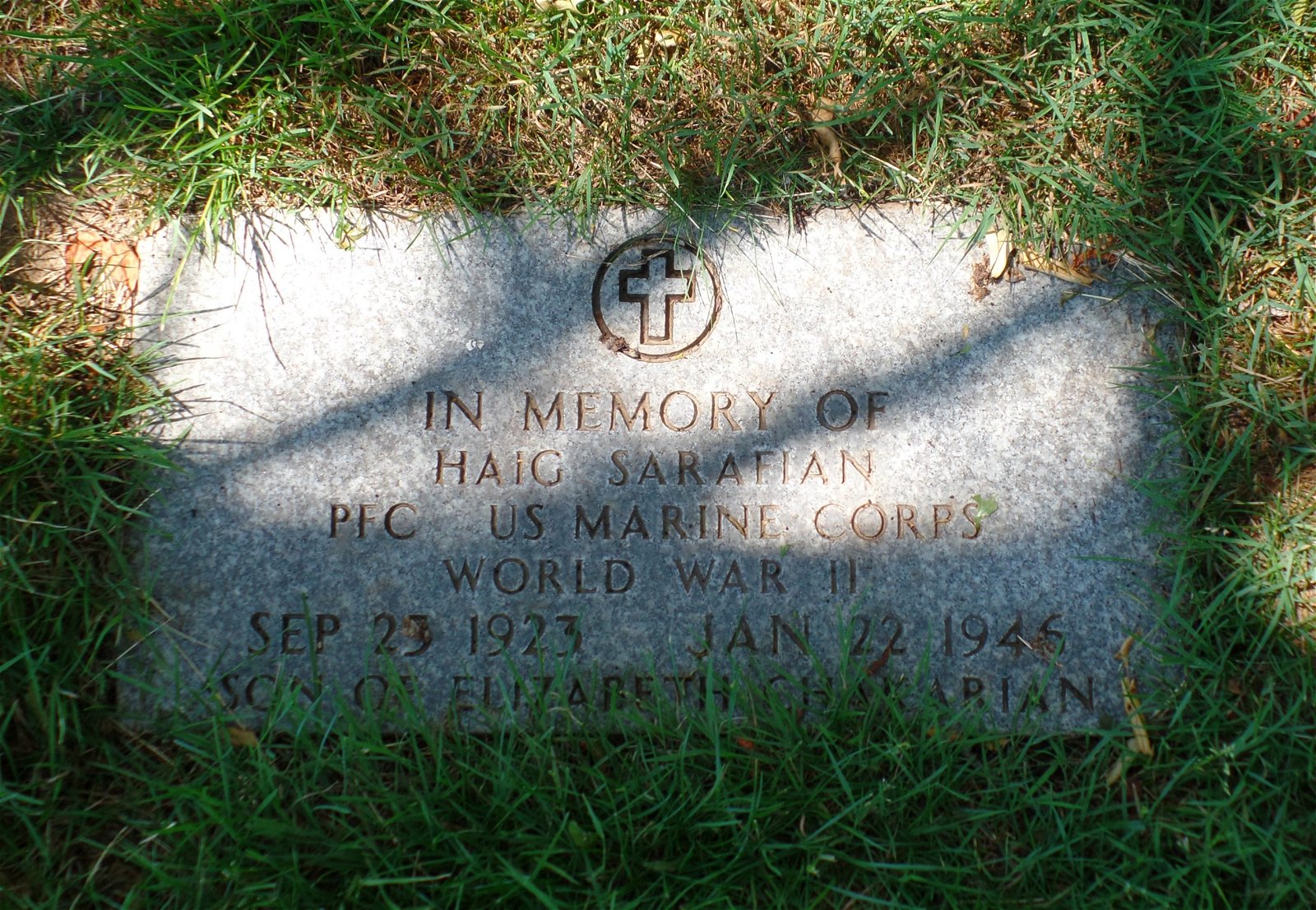Born on September 23, 1925, in Philadelphia, Pennsylvania, Haig Sarafian was the only child of Puzant Sarafian and Elizabeth Kistorian, two Armenian refugees who had no other choice than to leave their beloved land. Puzant settled in the United States in 1916, and Elizabeth set foot on American soil in 1921. After witnessing the horrors of the Armenian Genocide, the birth of their son was a chance to live a normal and peaceful life.
Haig grew up in West Philadelphia and was a cheerful kid, until his father walked out the front door and abandoned his family. This traumatic event changed everything. Without a father figure, Haig started making wrong choices and getting into trouble. His actions got him sent to the Kis-Lyn School for Boys in Luzerne County, Pennsylvania. It was a reform school aimed to rehabilitate juveniles who committed nonviolent offenses, such as shoplifting. Almost all the boys came from broken homes; some were psychologically destroyed after being abused by their parents. Discipline was severe at Kis-Lyn, and life was really tough for certain boys. The ones who behaved and worked hard were allowed visitors once a month. Haig was not one of those teenagers. He hated this reform school, so in October 1940, he took his chance and escaped. His little adventure didn’t last long. Quickly located by the State Police, Haig was immediately sent back to Kis-Lyn.

In January 1943, the world was at war, and Haig was now 17 years old. So he decided to join the US Marine Corps. Like every young man sent to the Pacific Theater, Haig knew that his chances of returning to Philadelphia were slim, but he knew that fighting for freedom was the right choice.
Haig first saw combat in Bougainville (Papua New Guinea) where he showed remarkable bravery. He was then stationed on Guadalcanal (Solomon Islands) where he lost one of his dog tags. Haig loved his brothers in arms, and he admired the camaraderie among Marines. He was willing to die for them, and they were willing to die for him. As a proud member of Company C, 1st Battalion, 1st Marine, he took part in the deadly Battle of Peleliu (Palau) and literally marched into hell. Despite his young age, this Armenian American teenager fought heroically, but on September 19, 1944, four days before his 19th birthday, Haig was killed by enemy fire. Intense efforts were made to locate his remains, but they were never found.
Thousands of miles away, his mother was devastated and never recovered from losing her only child. A few years after the war, she married a man named Cary Kegham Chakarian and moved to Massachusetts. Elizabeth passed away on February 25, 1989, in Worcester. Haig is now memorialized on the Tablets of the Missing at the Manila American Cemetery in the Philippines. He also has a memorial marker at the Massachusetts National Cemetery in Bourne, Massachusetts.

Bourne, Massachusetts
In 2012, 67 years after the end of the war, Mr. Mesion Bosoboe, an inhabitant of Guadalcanal, was walking near Tetere, when he found, by chance, the dog tag that Haig lost. When he discovered the heartbreaking story of this 18-year-old Marine who fought and died for a better world, he felt such a strong connection with him that he later decided to name his newborn baby “Haig.”
Seventy-seven years after the death of PFC Haig Sarafian and so many other Armenian American heroes, we have a choice to make. We can forget the past, look straight ahead, and let time, slowly and meticulously, erase the last traces of their footprints. Or we can build a bridge between the past and the future, to properly educate younger generations, preserve this invaluable heritage, and make sure that all the Armenian American heroes who died for freedom are remembered. The choice is ours. Now is the chance.



Outstanding article. Thank you for sharing so as we
read ….we remember and honor. Such a sad life who
sacrificed so those who lived could enjoy freedom. God bless his soul!
Dear John,
This was another story from you that brought tears to my eyes. the history that you are bringing to us is so incredible. I thank you for putting so many hours and days for gathering these information, to keep the memory of our boys alive. Bless your heart
My Korean War POW came home but he neverforgot the horror of war. God bless all Veterans. We owe them a debt that can never be repaid.
Thank you for sharing the story of PFC Haig Sarafian. To learn more about him, you can read my original research which uncovered his tragic story here:
https://www.donnaesposito.com/haig-sarafian
and
https://www.fold3.com/page/529974061/haig-sarafian